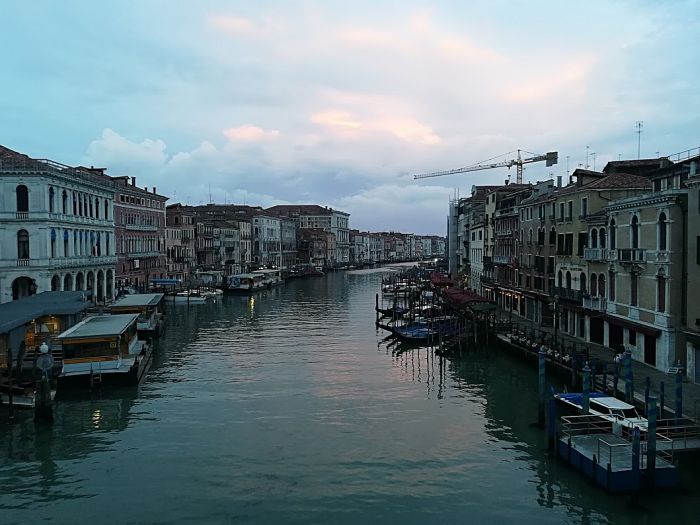
Another headline repeats what is becoming accepted wisdom: “Tourism is killing Venice, but it’s also the only key to survival.”
Apart from my inborn tendency to balk at the word “only” (in this case, is it true, or is tourism the only key you’ve come up with?), the phrase itself makes the same sense as “We had to destroy the village in order to save it.” “The operation was a success, but the patient died.” “Arsenic can kill you, but it’s the only thing we have to treat your late-stage trypanosomiasis.” Why do I keep linking tourism to death? That’s not good.
The quantity of tourists, as so many things, can be measured as “enough,” “more than enough,” and “far too much.” Sometimes these estimates are subjective (“I personally can’t find a seat anymore at my favorite cafe’, therefore there are too many people here”) to the clearly objective, like those overloaded Asian ferries that sometimes sink.
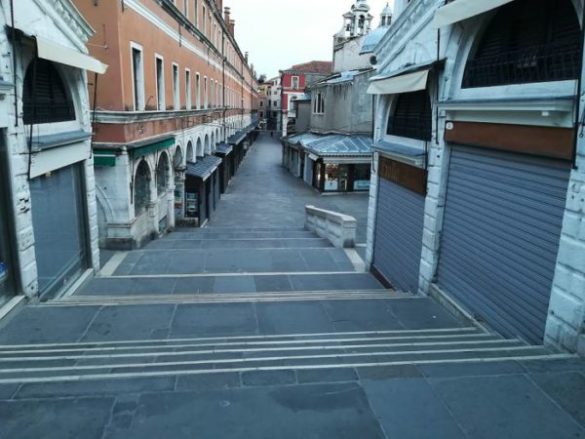
Venice’s plight is not unique. There are increasing numbers of places which are now under pressure from what once was a good thing, and they are trying different ways of managing it. Easter Island, if you’re interested, recently faced the fact that it was being subjected to a “veritable invasion of foreigners.” The 8,000 residents held a referendum and agreed to limit a tourist’s stay to 30 (as opposed to the previous 90) days, and soon will decide on a maximum number of tourists to allow at any one time, period.
Tourism to Iceland — a slightly less remote place — has increased five-fold since 2010. The population of Iceland is 332,000, and last year counted some 2,000,000 visitors. A tax is being discussed which would be applied in various ways to protect the spectacular natural environment from what amounts to six tourists for every resident.
Consider the gorgeous Croatian coastline. Rovinj, to take an example at random, has a population of 15,000; in 2017 there were 490,000 arrivals. Istria, the Croatian peninsula nearest to Italy, contains 208,000 residents; in 2017 there were 1,022,171 tourists from Germany alone.
Well, you say, when the shock has subsided, those are mostly summer destinations; obviously there’s breathing room there in the winter. And that’s true. But Venice is mostly a summer destination too.
Venice, so fragile, so small, obviously is facing its own perils, many based on chronic perplexity as to how to manage a place which has too many visitors to permit normal life, but which stubbornly insists on maintaining normal life anyway. Plans for peaceful coexistence that are hopefully suggested usually run aground on the reef of how to implement them. And there’s no way to ever make the city larger than three square miles.

Studies have shown that the sustainable limit of tourists to Venice is 19,000,000 a year. Last year 28,000,000 came, which is almost 50 percent more than the limit. The above study calculates that therefore Venice can sustain 52,000 tourists per day. We now have 77,000 per day. My own personal studies confirm that they will all be on the #1 vaporetto heading uptown on Sunday afternoon.
Speaking of vaporettos, they’re not your only option if you want to be crushed. Now the buses to Mestre in the late afternoon are reaching critical mass. So many tourists are packing the buses heading back to their much-less-expensive hotels, apartments, campgrounds, or wherever they’re staying on the mainland, that daily commuters literally can’t get on.
And if this is happening now, let me draw your attention to the several enormous hotels being built right next to the Mestre train station. Presumably their guests are going to want to go to Venice sometime, and even come back from Venice, on the already insufficient buses and probably soon-to-be-insufficient trains. Anybody is welcome to defend tourism, but I urge you once again not to say “Oh, but Venice lives on tourism” to any of the exhausted Venetians trying to get home as they watch the bus pull away without them.
The city government is struggling to find solutions to all this; it’s not like they don’t see what’s going on. The mayor recently announced that in the busiest periods he might close certain sections of the city to further entry. Something like this was tried a few months ago with “gates” at critical points, such as the Calatrava Bridge and the entrance to the Lista di Spagna, which were to slow, and redirect, the flood of arrivals heading toward San Marco from Piazzale Roma and the train station. It got mixed reviews and now the gates have been removed, though New Year’s Eve and Carnival desperation may require them to be reinstated.
Every time the topic of some form of entry tickets is raised, a thousand objections are heard. Entry is certainly easier to control at Easter Island, which is reachable only by means of a five-hour flight from Chile, but there must be at least 20 ways to get to Venice if you really want to, including, but not limited to, swimming.
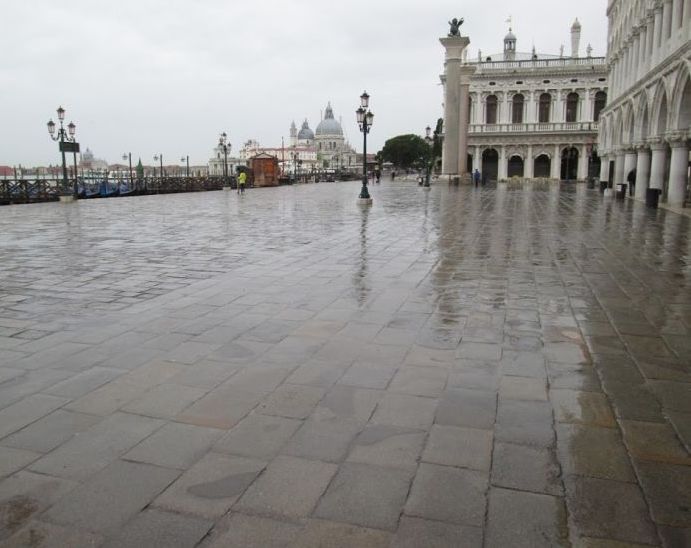
Managing crowds is an art and a science; the most striking example I know of is the reorganization of traffic in Mecca during the seven days of the annual hajj. Venice hasn’t reached the point where individuals are being trampled to death, but that was already a danger for the 2,000,000 Muslim pilgrims all trying to get to the same places together. A system has now been created to manage the flow better, so now we know it’s possible. It’s a fascinating story; here is a link to an interesting article on this amazing feat.
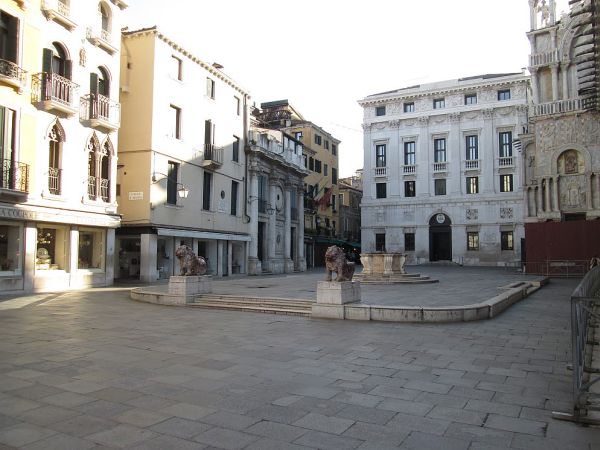
But “too many tourists” isn’t just numbers, it’s the ripple effect they have on Venetian life. I have recently noticed three effects of escalating tourism that are profound, even if not immediately perceived as such.
The first effect is the astonishing recent increase in supermarkets. A supermarket used to be a novelty, now it seems to have become a human right. There are even two, virtually side by side, on the Riva del Carbon near the Rialto Bridge.
I thought it would be interesting to find a map, or a list of the total number of supermarkets, but I didn’t and I don’t really care. They’re everywhere now. There’s the De Spar at the ex-Cinema Italia and literally two steps away is a Coop. Not literally ten steps away is a Conad, which used to be a Billa. Prix has inserted itself into all sorts of interesting corners, making it a challenge to find some of them although the lower prices make the search worthwhile, and there is a chain called Simply and something called Crai and so on.
If one knows — which one does — that the population of Venice is inexorably shrinking by about 1,500 people per year (despite a recent light touch on the brakes), it’s obvious that all these supermarkets haven’t been opening to support the few remaining locals. But when you consider the extreme increase of apartments being rented to tourists, voila’! I get it!
It’s clear that the dwindling population, including me, benefits from the supermarkets too. My point is merely that there wouldn’t be this number of emporia if locals were their only customers. Even I can understand that. But as I stand in line at the drastically expanded Coop on via Garibaldi it’s obvious that more than half of the people with me are tourists. And as I dodge their backpacks (yep, still on their backs, just like on the vaporetto) as they navigate the narrow aisles, I ask myself where the Sam Hill they all came from. I don’t mean what countries, I mean why are they all here now when five years ago there were so few? It’s like there’s a factory somewhere on a dark side street that’s manufacturing tourists.
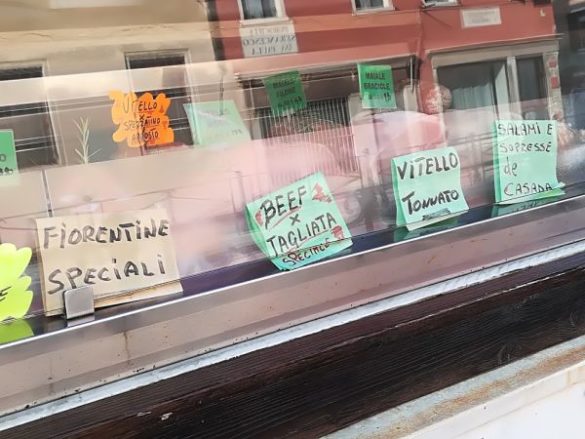
The second effect is the astronomical increase in apartments for short-term tourist rentals. By now this is not a new theme, but as I have often observed, you can hate AirBnb all you want (and it is far from the only outfit in this business), but if apartments are constantly being added to the supply available to tourists (and tourists respond by renting them, of course), why are these apartments being offered? To make money, naturally. And who is offering them? The Venetian landlords, naturally. While everyone is excoriating tourists for killing Venice, one should recognize who is handing them the ammunition. The shots, so to speak, are coming from inside the house.
One starts with the fact that there is very little space for locals to rent. The available space, which is increasing, is now primarily offered only to tourists. Some years ago, when Lino and I were requested to vacate the apartment we had rented for ten years, the landlady said she needed it for her cousin, or somebody, moving to Venice from Sicily, or somewhere. Any excuse will do, because of course she planned to rent it to students, which she did, demanding four times the rent we paid. Not made up.
But let that go. When we went looking for another rental somewhere — we weren’t fussy — no agency would talk to us because Lino’s Venetian (hence, theoretically impossible to dislodge). My being a foreigner was fine, as far as that went, but the point is that we weren’t in a position to pay the tourist-rental rates of — I think one agent said — 1,000 euros per week.
We managed, in the end, to buy our little hovel (we gave up on the rental idea), but we could manage. Yet there are extremely aged Venetians (a retired 90-year-old professor, in one case) who are being summarily evicted by their landlords because the apartment, which has now become a four-wall gold mine, is wanted for tourist rentals. The landlord says “I want my apartment back,” and a person who has been living in the place for 50 or 60 years is out on the street. There is no recourse. I am not making any of this up. A friend of mine told me a similar story of an elderly person in her building, “And the landlord is renting two other apartments already.”
This often-tragic upheaval is a clear response to the sheer quantity of tourists, but fingers in the press are pointed at the tourists. Why? As Lino puts it: “Who is forcing the Venetians to leave? The Venetians!” Therefore, if you look around and all you see is tourists, there are reasons.
A group called Occupy Venice has come forth with the goal of re-appropriating empty apartments (that is, those whose fate has not yet been sealed by tourism). A friend has sent an article which you can peruse.
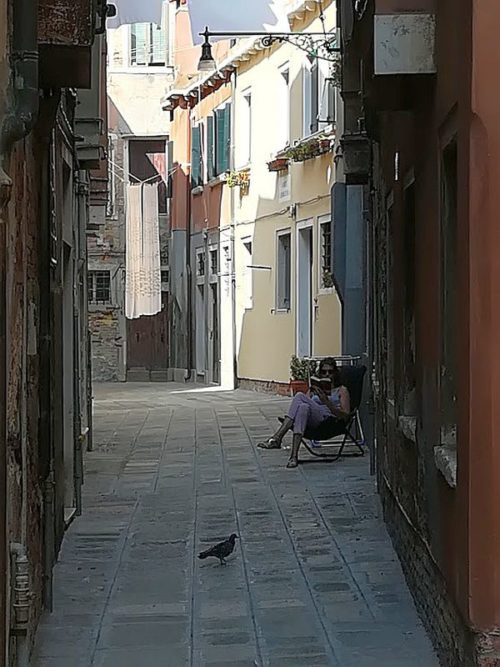
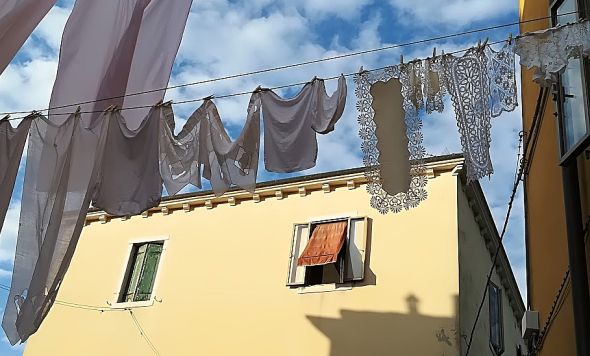
The third sign of increased tourism may not matter to anybody but me, so you can skip the next few paragraphs if you want.
I saw it on the day of the Regata Storica. This event focuses on four races which gloriously but inconveniently occupy the Bacino of San Marco and the Grand Canal for a total of three hours in the afternoon. This deranges the vaporetto routes, of course, and this year it was decided (one always wonders by whom) that this derangement was no longer acceptable. Therefore, for the first time in at least 100 years, the traditional “boa” in front of the train station was moved further downstream to just before the Cannaregio Canal.
“So what?” you ask. The “boa” is a temporary object which the racers turn around in order to head back down the Grand Canal toward the finish line. Tradition has always placed it in front of the train station, where there’s plenty of room for the boats to maneuver and plenty of room on the piazza in front of the station from which tourists can watch this usually dramatic moment. Win-win for everybody?
Of course not, because now there are enough tourists (or even some locals, I guess) who don’t care about the races and who are inconvenienced by not having vaporetto service from Piazzale Roma up the Cannaregio Canal during those few hours. One might regard the Regata Storica as the city’s festival, but no longer does the entire city celebrate.
Therefore moving the boa enabled the vaporettos to continue to navigate the upper reaches of the Grand Canal, unhindered by those pesky races. So another intangible, but no less real or important, piece of Venetian life has just been distorted (I didn’t want to say “eliminated,” but eliminated) for the benefit of I actually do not know whom. Because for many decades this temporary interruption of service didn’t create insurmountable problems for anyone. Does this change mean that now the number of “anyone” has superseded the number of those who want to see the Regata? Evidently yes.
The newspaper chronicles the craziness of the tourists, but crazier things keep happening below the proverbial radar. As in the case of the Fondaco, it’s the people in offices who actually have the destiny of the city in hand, and it will be a cold day in the Inferno when any regular Venetians might be consulted on the matter. But why consult them? Before long they’re all going to be dead. So bring on the tourists!
We need to move out of this dark tunnel now; I have a happy story to tell you.

A few days ago Lino and I were on the vaporetto going down the Grand Canal; it was late afternoon, that delectable moment in which you feel the heat of the day almost imperceptibly begin to subside and the faintest zephyr of coolness sweep over your sticky skin.
There were seats along each side of the boat’s bow, and everybody wants to sit there, of course: the view, the breeze, the general feeling of being the figurehead of the ship. The four forward-most seats on our side were occupied by a family, with the boy and his father on the left, the girl and her mother on the right. They weren’t talking much, mostly just relaxing and looking at the incomparable panorama as we trundled along. Tourists, of course, but calm, coherent tourists, acting like normal people.
As we passed the Customs House Point, where the Bacino of San Marco opens up to splendor on every side, the man reached across and touched his wife. She looked back and took his outstretched hand, and they silently squeezed, and smiled, gazing out at the glory.
Watching this, everything fell back into perspective and I was suddenly glad they were here. They weren’t just another four tourists, they were people who saw the beauty, and they were happy. It seemed that so many thoughts and emotions were being exchanged in that instant and I unexpectedly could imagine myself in their place, and I remembered how Venice made me feel the first time I came here, and I wanted that for everybody.
If all those too-many people who came to Venice could feel what they felt, then maybe we could find another word for them and stop calling them TOURISTS.

8 Comments
I sometimes pause to wonder what Venice would be like today if the course of history had run differently. What if the duchy had lost to the Byzantines or later to the Turks? Or if it had won against the League of Cambrai and retained its prominent commercial role? What if the routes that allowed a rise of new talent and wealth and entry into the nobility had not been throttled? What Napoleon had not overtaken Venice? What if it had not been granted to Austria by the Congress of Vienna.. if it had not joined Italy… and remained an independent city state.
Would Venice look like Manhattan, or Singapore? Glass towers rising from the lagoon? The lagoon perhaps filled in and built over? An obscure historic corner of a sprawling industrial Maestre? Would there be, only here and there, an overlooked and crumbling palazzo that, along with yellowing engravings and flaking dauguerreotypes, would remind us of what once was there?
Maybe overwhelming tourism will destroy what time and history have failed to. But I hope not… at least not in our lifetimes!
Playing “what-if” is always fun.
Thank you again for your wonderful and informative posts. Although often as I read them I feel ashamed to have been (and will soon be back!) a tourist in Venice, I do hope that we are counted among the more civilised ones. In the past we have visited in almost all but the midsummer madness time, and shall be back in November and December to enjoy the mists and quieter mornings, they make it worth braving even the Aqua Alta to experience! Wellies packed and ready! We also have enjoyed many of those semi-deserted early morning views.
I’m glad you have such lovely experiences of Venice. But I wish you wouldn’t feel ashamed to have been a tourist. What else can you be, if you’re not a resident? As I keep mentioning, we need to find a better word for visitors that doesn’t have what now are ineradicably negative connotations. Suggestions welcome.
Amen! This is thoughtfully written piece, especially regarding the role of Venetians, surely not a popular observation but perhaps the most important point to consider if solutions are really what locals want. Having much experience in the city as a student, part-time resident and traveler, there are of course many reasons why Venetians at this stage have thrown up their hands, given up – and given in. Being cautiously optimistic, I hope the tide turns, bringing young people back into the vacant spaces in the city is a great start.
I absolutely agree. Then all we need to do is find them jobs, because the average rate of youth unemployment in Italy is 28 per cent.
Thanks for the lighthearted finale to your post. That is how my hubby and I would be if we ever traveled to Venice! I don’t know what to say about the huge tourism wave. It seems people are ignoring the climate crisis and are perfectly happy to add their airline pollution to the ever growing rise in CO2. I don’t think I will ever fly again. I am not being goody two shoes at all. If we are to try to stop climate change, and now I will call it what it really is, GLOBAL WARMING, some of us, most of us, have to STOP burning the fossil fuels that are required for travel or even just a trip to the supermarket. I am willing and ready and have already done so, as much as I can. I guess I am living like my grandmother did. She lived only FIVE miles outside a small town but simply stayed home, reading, gardening, visiting with friends, for most of her life. She and my grandfather “went to town” only once a week, on Saturday. To find the wonderful peace and beauty we have way out in the country, we had to move 28 miles from the nearest town. We were lucky to find our little place before the real estate prices went sky high. I know am privileged to live here. To do my part, I also do not drive more than once a week. I would buy a used electric car if they made them with a greater range and they weren’t so expensive. Ideally, we would live in a village where we did not even need a car. I dream of that scenario often. Now I have circled around to the village life you have, Erla. The fly in the ointment is the huge crowds you have to endure. Sorry for that.
I’m glad you have the option to live in a place and manner which limits your use of fossil fuels. Many (most?) people don’t have that choice. However, the sources of energy are going to have to change, I think that’s pretty clear. As you point out, travel also produces pollution, so I suppose the simple number of tourists passes to a lower level of concern compared to the effects of the travel itself. All that being said, I don’t think it’s useful to think about merely reducing numbers (you didn’t suggest this) because people have always wanted to travel. Travel is great! Even the great pilgrimages of the Middle Ages were, apart from religious reasons, one of the few ways that people were allowed to get out of the village, go see something different, eat some different food, break out of the rut. Vacation, in a word. We need them.